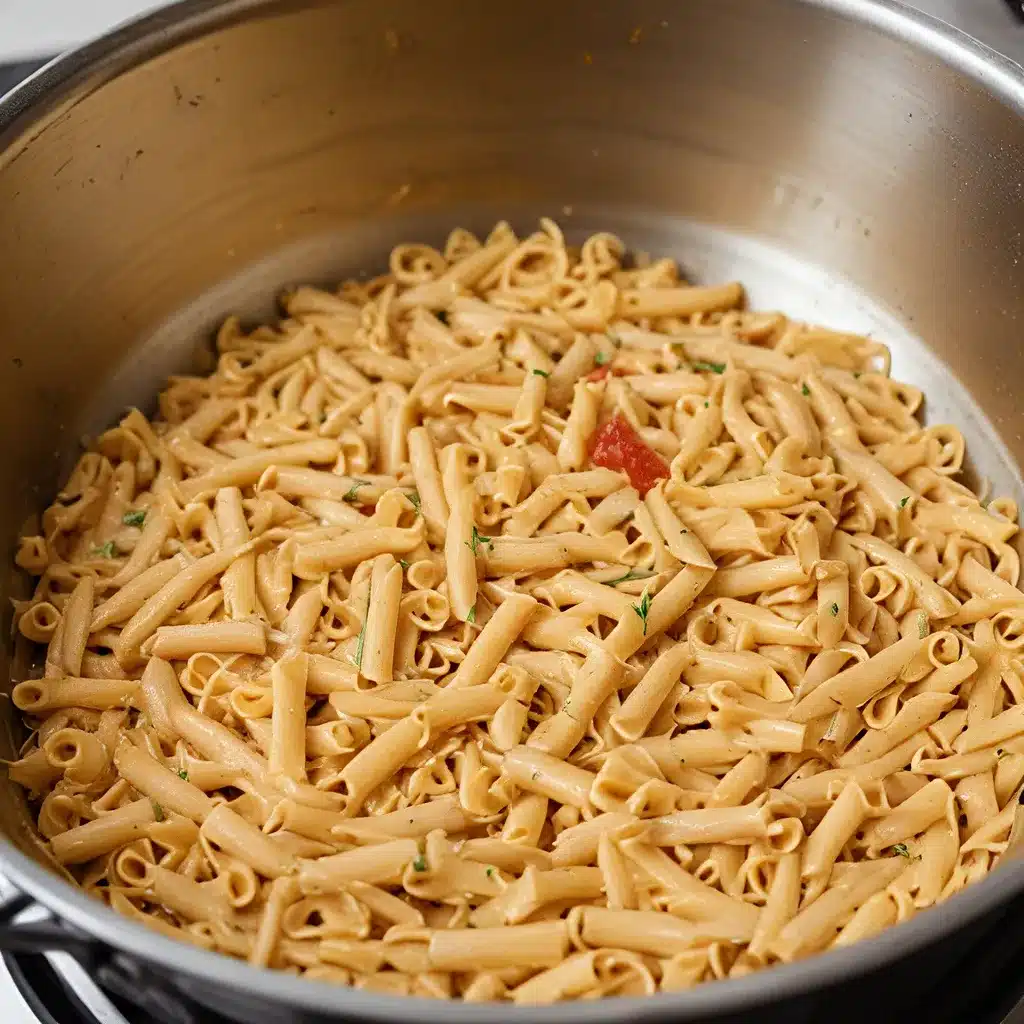
Ah, pasta – the culinary delight that has captivated the hearts and palates of people around the world. Whether you’re whipping up a classic spaghetti bolognese or experimenting with handmade ravioli, the key to achieving that perfect al dente texture lies in the art of boiling.
As a self-proclaimed pasta enthusiast, I’ve learned that the secret to perfectly cooked noodles is all about understanding the boiling process. It’s a delicate dance, requiring just the right balance of water temperature, timing, and technique. But fear not, my fellow pasta-lovers, for I’m here to share my hard-earned wisdom and guide you towards pasta nirvana.
The Importance of Water Temperature
Let’s start with the foundation – the water. Proper water temperature is crucial for achieving that sought-after al dente texture. The ideal temperature range for boiling pasta is between 212°F (100°C) and 212.5°F (100.3°C). This narrow window ensures that the pasta cooks evenly and retains its signature bite.
According to the experts at The Clever Carrot, the water should be at a rolling boil before you even think about adding your pasta. This rapid, turbulent boil helps the noodles maintain their shape and prevents them from sticking together.
But here’s the kicker – you can’t just set the temperature and forget it. Oh no, my friends. You need to be vigilant, constantly monitoring the water and adjusting the heat as needed to keep that boil at a consistent, raging level.
The Importance of Timing
Now, let’s talk about timing. Pasta cooking time is not a one-size-fits-all proposition. It can vary greatly depending on the type, thickness, and even the brand of pasta you’re using. As The Clever Carrot advises, the best way to determine the perfect cooking time is to taste the pasta as it cooks.
Start by setting a timer for the lower end of the recommended cooking time on the package. Then, every 30 seconds or so, fish out a strand and give it a bite. You’re looking for that satisfying al dente texture – a pasta that’s tender yet still has a slight bite to it.
The key is to avoid overcooking, which can lead to a mushy, unappetizing mess. Pasta can go from perfectly cooked to overcooked in the blink of an eye, so keep a close eye on the clock and those taste tests.
The Importance of Technique
But the boiling process doesn’t stop there, my friends. The technique you use can also make or break your pasta masterpiece. Let’s dive in, shall we?
First and foremost, remember to generously salt the water. The Clever Carrot suggests not giving an exact amount, as it really depends on the sauce you’re pairing the pasta with. The general rule of thumb is to add enough salt to make the water taste like the sea. This not only seasons the pasta but also helps prevent it from sticking together.
Next, be mindful of the pasta-to-water ratio. You want to use a large pot and plenty of water – at least 4-6 quarts (3.8-5.7 liters) for every pound (454 grams) of pasta. This allows the noodles to move freely and ensures even cooking.
And finally, resist the urge to stir constantly. The Clever Carrot advises giving the pasta a gentle stir just a few times during the cooking process. Overagitating the noodles can actually cause them to stick together and become misshapen.
The Art of Transferring
Ah, the final step – transferring the perfectly cooked pasta from the pot to the sauce. This is where many home cooks stumble, but fear not, I’ve got your back.
Use a pair of tongs or a pasta fork to carefully lift the noodles out of the boiling water and directly into the sauce. Avoid draining the pasta in a colander, as this can lead to the noodles sticking together and losing that precious al dente texture.
By transferring the pasta directly to the sauce, you’re not only preserving that perfect bite, but you’re also allowing the noodles to absorb all the delicious flavors of the sauce. It’s a match made in culinary heaven, my friends.
Putting It All Together
Now that you’ve mastered the art of boiling pasta, it’s time to put it all together and create the ultimate pasta dish. Whether you’re whipping up a classic spaghetti and meatballs or experimenting with homemade ravioli, the key is to approach the process with care, patience, and a healthy dose of pasta-loving passion.
Remember, the secret to perfectly cooked pasta lies in the details – the water temperature, the precise timing, the proper technique, and the seamless transfer to the sauce. Embrace the process, trust your instincts, and let your inner pasta aficionado shine.
And don’t forget to visit Saint Marc USA for all your pasta-making needs, from top-quality ingredients to the latest in kitchen gadgets. After all, with the right tools and the perfect boiling technique, the possibilities for pasta perfection are endless.
So, what are you waiting for? Grab a pot, fill it with water, and let’s get cooking! Your taste buds are about to experience a revelation.

